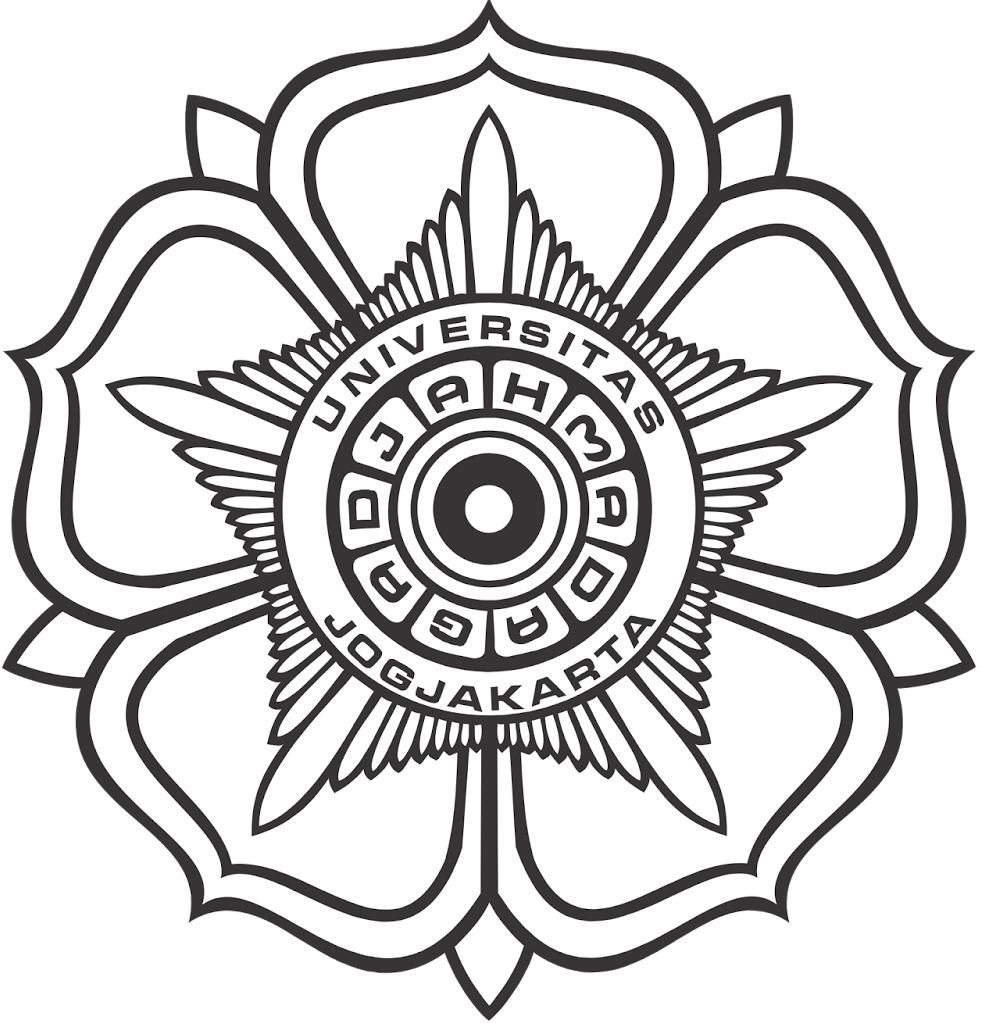ISOLATION AND IDENTIFICATION OF ANTIFUNGAL (Candida albicans) COMPOUND FROM THE HULL OF DELIMA FRUITS (Punica granatum L.)
Abstract
The hull of delima fruits (Punica granatum L.) are traditionally used to cure dysmenorhoe. Preliminary study indicated that extract of the hull was able to inhibit the growth of Candida albicans. Therefore this study was aimed to isolate and identify active compounds responsible for the activity from the hull of P. granatum. The study was initiated by extracting the powdered material with petroleum ether followed by methanol. Antifungal activity test (100 mg/ml) indicated that the petroleum ether extract was more active than the methanol extract (inhibition zone: 10.59 vs 6.92 mm). The pet. ether extract was triturated by n-hexane to give n-hexane insoluble and n-hexane soluble fractions. The latter that was active (inh. zone: 9.50 vs 0.00 mm) was fractionated by vacuum liquid colomn chromatography (vlc; SiO2, n-hexane with increasing amount of ethylacetate) to give 7 fractions (F1-F7). Fraction 2 (inh. zone: 9.05 mm) and 3 (11.05 mm) displayed antifungal activity, then F3 was subjected to contact bioautography to give 2 active compounds [Rf. 0.50 (major) and 0.10 (minor)]. Preparative tlc [SiO2 F-254 nm; nhexane: ethylasetate 4-1, developed 2x) of F3 was aimed to separate 2 active compounds. Due to limited amount of the minor compound, the MFC was applied only for the major compound (Rf. 0.50; 200 mg/ml). The structure identification was done by mean of spectroscopic methods (uv, ir, ms and nmr) to be a setrol type of compound having stigmastane skeleton, esterified by a long-chain fatty acid.
Keywords: Punica granatum L., Candida albicans, active compound, terpenoid
Full Text:
UntitledReferences
Alekperov, U. K., 2002, Plant antimutagens and their mixtures in inhibition of genotoxic effects of xenobiotics and aging processes, Eur. J. Cancer Prev., Aug; 11, suppl. 2:S8-11
Aliadi, A., Sudibyo, B., Hargono, D., Farouq, Sidik, Sutaryadi, Pramono, S., 1996, Tanaman Obat Pilihan, Yayasan Sidowayah, Jakarta
Chidambara Murthy, K. N., Jayaprakasha, G. K., Singh, R. P., 2002, Studies on antioxidant activity of pomegranate (Punica granatum) peel extract using in vivo model, J. Agric. Food Chem. Aug 14;50(17):4791-5
Duke, Dr. Duke’s Phytochemical and Ethnobotanical Databases, http://www.ars-grin.gov/cgi-bin/duke/farmacyscroll3. pl/, diakses Desember 2001
Gharzouli K, Khennouf S, Amira S, Gharzouli A, 1999, Effects of aqueous extracts from Quercus ilex L. root bark, P. granatum L. fruit peel and Artemisia herba-alba Asso leaves on ethanol-induced gastric damage in rats. Phytother Res, Feb;13(1):42-5
Holetz, F. B., Pessini, G. L., Sanches, N. R., Cortez, D. A., Nakamura, C. V., Filho, B. P., 2002, Screening of some plants used in the brazilian folk medicine for the treatment of infectious diseases, Mem. Inst. Oswaldo Cruz., Oct; 97(7): 1027-31
Jafri MA, Aslam M, Javed K, Singh S, 2000, Effect of P. granatum Linn. (flowers) on blood glucose level in normal and alloxan-induced diabetic rats.J Ethnopharmacol, Jun;70(3):309-14
Kim, N. D., Mehta, R., Yu, W., Neeman, Livney, T., Amichay, A., Poirier, D., Nicholls, P., Kirby, A., Jiang, W., Mansel, R., Ramachandran, C., Rabi, T., Kaplan, B., Lansky, E., 2002, Chemopreventive and adjuvant therapeutic potential of pomegranate (Punica granatum) for human breast cancer, Breast Cancer Res. Treat., Feb; 71(3):203-17
Machado, T. B., Pinto, A. V., Pinto, M. C., Leal, I. C., Silva, M. G., Amaral, A. C., Kuster, R. M., Netto-dosSantos, K. R., 2003, In vitro activity of Brazilian medicinal plants, naturally occurring naphtoquinones and their analogues, against methicillin-resistant Staphylococcus aureus, Int. J. Antimicrob. Agents, Mar.; 21(3): 279-84
Noda, Y., Kaneyuki, T., Mori, A., Packer, L., 2002, Antioxidant activities of pomegranate fruit extract and its anthocyanidins: delphinidin, cyanidin, and pelargonidin, J. Agric. Food. Chem., Jan 2; 50(1):166-71
Perez C, Anesini C, 1994, In vitro antibacterial activity of Argentine folk medicinal plants against Salmonella typhi, J Ethnopharmacol, Aug;44(1):41
Satomi H, Umemura K, Ueno A, Hatano T, Okuda T, Noro T, 1993, Carbonic anhydrase inhibitors from the pericarps of P. granatum L., Biol Pharm Bull, Aug; 16(8):787-90
Setyowati, E. P., 1998, Pemeriksaan Potensi Antijamur (C. albicans) Pada Beberapa Penyusun Jamu Keputihan yang Beredar di Pasaran, Laporan Penelitian, Lembaga Penelitian Universitas Gadjah Mada
Silverstein, R. M., Bassler, G.C., Morrill, T. C., 1991, Spectrometric Identification of Organic Compounds, fifth edition, John Wiley and Sons Inc., New York
Singh, R. P., Chidambara Murthy, K. N., Jayaprakasha, G. K., 2002, Studies on the antioxidant activity of pomegranate (Punica granatum) peel and seed extracts using in vitro models, J. Agric. Food. Chem., Jan. 2; 50(1):81-6
Syamsuhidayat, S. S., Hutapea, J. R., 1991, Inventaris Tanaman Obat Indonesia, edisi I, Departemen Kesehatan Republik Indonesia
Trinpathi dan Singh, 2000, Molluscicidal activity of P. granatum bark and Canna indica root, Braz J Med Biol Res, Nov; 33(11):1351-1355
DOI: http://dx.doi.org/10.14499/indonesianjpharm0iss0pp150-159
Refbacks
- There are currently no refbacks.
Copyright (c) 2017 INDONESIAN JOURNAL OF PHARMACY

This work is licensed under a Creative Commons Attribution-ShareAlike 4.0 International License.
Indonesian J Pharm indexed by:







































